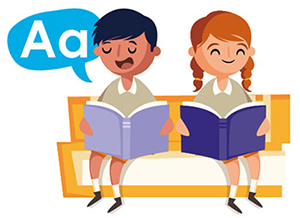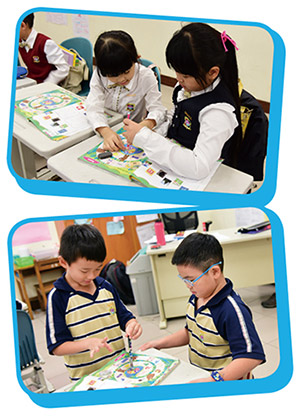
Nurturing Confident Readers from the Very Beginning
國際處主任 賴國宜
Reading forms an intrinsic part of our life. It is often taken for granted for most of us. Until it's time to teach kids to read, most parents find it's difficult to know where to start. Phonics, phonemic awareness, spelling, vocabulary, fluency, accuracy and comprehension are all essential elements of learning to read. Mr. Harmon explains how phonics is taught as a set of foundational skills that are applied in our reading curriculum.
Adventures are always exciting for kids. The grade 4 teachers challenged the students to make an expedition plan to discover where on campus they can learn new things. Follow their maps; you will be surprised where they lead you!
對已經學會閱讀的人來說,看著文字理解意義,如呼吸般自然,因此,我們很容易低估閱讀學習的困難度。以英文閱讀為例,它是個極複雜的認知過程,首先孩子需了解,「字」由一連串的「音」組成(phonemic awareness),每個音有其對應的字母(phonics),將對應的字母拼出來(spelling),了解其意義(vocabulary),將字組合成句子,句子組合成段落,才達成所謂的閱讀理解(comprehension),這個解碼過程越快(fluency),越正確(accuracy),代表閱讀的效能(effectiveness)。Mr. Harmon的文章說明一到三年級的phonics課程,除了教授發音規則,更重要的是提供孩子很多拼讀詞彙和閱讀文章的學習機會,才能提升閱讀的流利度、正確性,以精進閱讀理解力。
四年級外師挑戰這群在康橋有三年學習經驗的孩子:校園裡,有哪些地方最值得學生去探索?透過一連串的計畫、校園查勘、畫地圖等活動,孩子們完成了校園新發現報告,因為大家的興趣不同,關注的學習場域不同,最後的分享報告讓大家驚喜連連,原來校園有這麼多寶藏,歡迎您跟著他們的Exploring KCIS Project一起到校園去「探索」、「發現」和「學習」。

~ Jason Harmon
Curriculum Coordinator, International Department

The relative weight of phonics instruction is a highly debated topic in education. How much explicit phonics learning is needed to acquire independent reading skills? This can make parents of young learners anxious. What method will the teacher use? Is sounding out words the best approach? If my child already reads long stories, isn’t this too easy? KCIS considers all of these questions. The overall goal of our phonics curriculum is to improve independent reading by focusing on phonemic awareness; the ability to hear, identify, and manipulate sounds. This is achieved by explicitly teaching basic letter-sound relationships and decoding skills, before implicitly using learned phonics skills in all parts of our curriculum.
Explicit Teaching of Individual Letter Sounds and Simple Words
Our phonics teaching starts at the most basic level. Students are taught explicit sounds and guided to blend individual letter sounds together to form words, as well as identify patterns. Instruction is clear and simple. Multisensory activities are presented to students; pronouncing sounds, tracing and writing letters, and tapping sounds in a word. Reading passages are introduced to teach phonics in context. Students learn to find patterns that they see in other parts of their curriculum, such as spelling words and main readings. By building from the ground up, we develop a strong foundation and meet the needs of every student.

More Complex Words and Independent Reading
The second phase of our phonics curriculum focuses on independent reading. Students are taught to recognize more complex blends and vowel patterns, as well as skills for decoding words. Students learn to look for long vowel patterns in words, and to identify blends at the beginning and end of words. Students apply these skills as they learn new spelling words, using knowledge of prefixes, suffixes, and root words to pronounce words accurately. As students read, they decode unknown words and apply their knowledge of letter sounds and more complex blends. This builds confidence and allows skills to be continually assessed and reinforced.
Enthusiasm towards Independent Reading
As a whole, the focus of our phonics curriculum is to improve independent reading. Explicit teaching in lower grades provides a solid foundation. Then, other parts of our language arts curriculum reinforce learned material, assess skills, and build confidence. So the answer to initial questions of what phonics students learn is an all encompassing one. A holistic approach to the phonics allows students to gain a strong foundation, and when ready, apply it independently. That is really our main goal: the ability and desire to read independently.


![]() 全文下載)
全文下載)